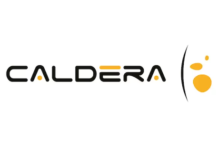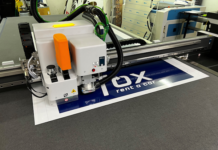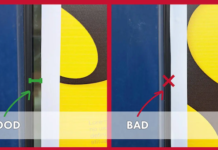Laurel Brunner from the Verdigris Project discusses the environmental impact of digital signage and displays, weighing up the pros and cons.
Proponents of pretty much all forms of digital communications sincerely believe that they are kinder to the planet than the printed equivalents. They believe it is more efficient and that it does a better job of communicating brand identity.
They forget that print’s only carbon footprint is when it is produced. Instead they try to persuade the market that digital media are eco-friendly because they involve no tree felling or transportation emissions. Digital media fans also forget that paper can be recycled up to seven times. Thanks to the internet, print production can take place very close to its point of use and once installed, printed signage has no environmental impact at all. It’s carbon footprint in use is zero.
Updating the information on signage does however require a new version of the print. This imperative encourages good design, to create compelling and effective messages. What matters more is to ensure that redundant prints find their way efficiently into recycling systems. Recycling redundant digital signage technology is a lot more complicated and involves emissions as well as complex sorting.
Too much electronic waste is still improperly handled and even dumped. Recycling supply chains for printing plates, chemicals, blankets and substrates have been in place for many years and are as effective as they are sophisticated – further improving print’s sustainability credentials.
It’s important to understand that the carbon footprint of print media occurs only once, when the media is produced and delivered. But for an electronic poster or indeed any form of digital signage, there is a continual and perpetual footprint for as long as the sign is in place. Even for signs that use low energy LEDs, this means constant emissions. Add touch screen options to the digital screen and the footprint balloons.
For brand owners the investment cost into digital signage is substantial and ongoing. There is also the consideration that whilst these signs are bright and attention grabbing, they are not necessarily as effective or memorable as a high resolution, flicker free printed equivalent. Printed posters can be works of art, desirable and even collectible. Hanging a digital sign on the wall doesn’t have quite the same appeal, but if it were to happen, the carbon footprint would keep on growing for years and years.
This article was produced by the Verdigris Project, an industry initiative intended to raise awareness of print’s positive environmental impact. Verdigris is supported by: Agfa Graphics (www.Agfa.com), EFI (www.efi.com), FESPA (www.fespa.com), HP (www.hp.com), Kodak (www.Kodak.com/go/sustainability), Kornit (www.kornit.com), Practical Publishing (www.practicalpublishing.co.za), Ricoh (www.ricoh.com), Spindrift (https://spindrift.click/), Unity Publishing (http://unity-publishing.co.uk) and Xeikon (www.xeikon.com).
This work by the Verdigris Project is licenced under a Creative Commons attribution-noderivs 3.0 Unported licence http://creativecommons.org/licences/by-nd/3.0/
Submit your news and video content to journo@practicalpublishing.co.za
Subscribe to our YouTube channel, read the top 5 stories weekly on WhatsApp or sign up to our newsletter.
THE VERDIGRIS PROJECT http://verdigrisproject.com/















